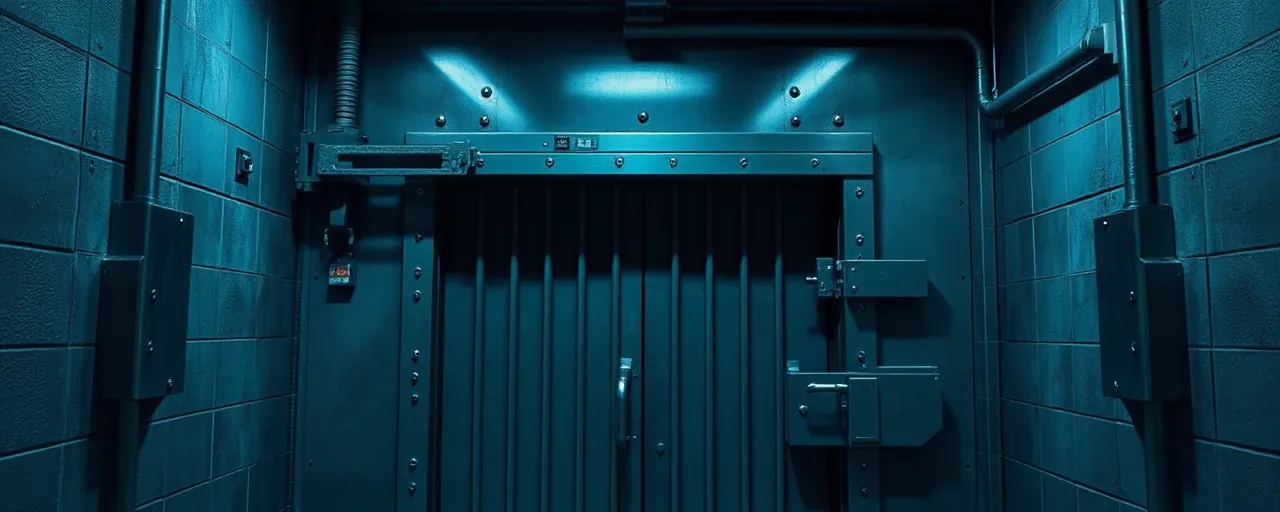A Brutal Act in Isolation
A federal grand jury has charged Ishmael Petty, a 56-year-old inmate, with first-degree murder after he allegedly killed a fellow prisoner at the United States Penitentiary Administrative Maximum Facility in Florence, Colorado. The incident, which took place on September 19, 2020, unfolded within the stark, concrete walls of the nation’s only supermax prison, a place designed to hold the most dangerous offenders in federal custody. Petty, already serving a life sentence, now faces the possibility of execution as prosecutors push forward with one of the harshest penalties available under U.S. law.
Details of the killing remain sparse, but court documents paint a grim picture of violence erupting in a facility where inmates spend 23 hours a day in solitary confinement. Petty’s history offers context, his time behind bars marked by a 1998 bank robbery conviction, a 2002 life sentence for another prison murder, and a 2015 assault on two federal officers that added 60 years to his record. The latest charge has thrust this case into the national spotlight, raising questions about safety, punishment, and the limits of incarceration.
The Push for Capital Punishment
Attorney General Pam Bondi has greenlit the pursuit of the death penalty, a decision that aligns with recent federal directives encouraging prosecutors to seek capital punishment in high-profile cases. The U.S. Attorney for the District of Colorado filed a formal notice of intent, signaling that Petty could face execution if convicted. This move reflects a broader policy shift under the current administration, which has reinstated federal executions after a years-long pause and urged tougher stances on crimes involving violence against law enforcement or within federal facilities.
Yet the decision isn’t without contention. Public support for the death penalty has dipped to 53%, a five-decade low, according to recent polls. Advocates for its use argue it serves as a deterrent and delivers justice for heinous acts, pointing to Petty’s repeated violent offenses as justification. Opponents counter that it risks compounding systemic flaws, citing racial disparities, Black Americans make up 41% of death row despite being just 13% of the population, and the potential for irreversible errors in a justice system not immune to mistakes.
Life Inside the Supermax
ADX Florence, often dubbed the ‘Alcatraz of the Rockies,’ is a fortress of isolation. Inmates live in 7-by-12-foot cells, eat meals slid through slots, and exercise alone in caged yards. Built in 1995 after deadly attacks on guards at another federal prison, it houses individuals deemed too dangerous for less restrictive settings, think terrorists or gang leaders. But Petty’s alleged crime suggests that even these extreme measures can’t fully stamp out violence. The facility’s design aims to protect staff and inmates alike, yet incidents persist, exposing cracks in the system.
Critics of ADX point to its psychological toll. Studies link prolonged solitary confinement to mental health decline, with some inmates reporting hallucinations or suicidal thoughts. A 2024 lawsuit forced the prison to bolster mental health care, but many argue the conditions remain inhumane. Defenders of the supermax model insist it’s a necessary last resort for those who’ve proven they can’t coexist safely elsewhere, a claim tested by cases like Petty’s, where violence flares despite the tightest controls.
A System Under Scrutiny
Petty’s case lands amid growing concerns about federal prison safety. High-profile assaults, like the stabbings of Derek Chauvin and Larry Nassar, have exposed understaffing and oversight gaps. Violence isn’t rare, 46% of federal inmates have violent histories, and recidivism data shows 63.8% of such offenders reoffend within eight years of release. For those like Petty, never slated for release, the question becomes how to manage risks inside. The Bureau of Prisons has rolled out reforms to curb abuse and boost accountability, but skepticism lingers over their impact.
Prosecutorial discretion adds another layer. Federal guidelines push for severe charges, yet outcomes vary widely, sparking debate over fairness. Historical cases, like the 1972 Supreme Court ruling that paused executions for arbitrary sentencing, echo today’s worries about consistency. Petty’s fate hinges on a Colorado jury, but the broader conversation wrestles with whether capital punishment fits a modern justice system grappling with equity and humanity.
What Lies Ahead
As Petty awaits trial, his case encapsulates a tangle of issues, from the ethics of execution to the realities of containing violence in America’s toughest prison. The FBI’s Denver Field Office led the investigation, and prosecution rests with seasoned teams from the Justice Department’s Capital Case Section and Colorado’s U.S. Attorney’s Office. An indictment, officials stress, isn’t proof of guilt, Petty remains presumed innocent until a court decides otherwise. Still, the stakes couldn’t be higher, a life hangs in the balance, and with it, a nation’s resolve to define justice.
The outcome will ripple beyond one man. It’ll test the federal push for executions, six have occurred in 2025 alone, against a backdrop of shifting public views and persistent prison challenges. For those new to these debates, it’s a raw glimpse into a system where punishment, safety, and morality collide, leaving no easy answers, just hard questions about what society demands from its laws and its locks.
